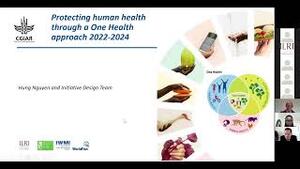
Urbanization and disease emergence: Dynamics at the wildlife–livestock–human interface
Abstract
Urbanization is characterized by rapid intensification of agriculture, socioeconomic change, and ecological fragmentation, which can have profound impacts on the epidemiology of infectious disease. Here, we review current scientific evidence for the drivers and epidemiology of emerging wildlife-borne zoonoses in urban landscapes, where anthropogenic pressures can create diverse wildlife–livestock–human interfaces. We argue that these interfaces represent a critical point for cross-species transmission and emergence of pathogens into new host populations, and thus understanding their form and function is necessary to identify suitable interventions to mitigate the risk of disease emergence. To achieve this, interfaces must be studied as complex, multihost communities whose structure and form are dictated by both ecological and anthropological factors.
Citation
Hassell, J.M., Begon, M., Ward, M.J. and Fèvre, E.M. 2017. Urbanization and disease emergence: Dynamics at the wildlife–livestock–human interface. Trends in Ecology & Evolution 32(1):55–67.










